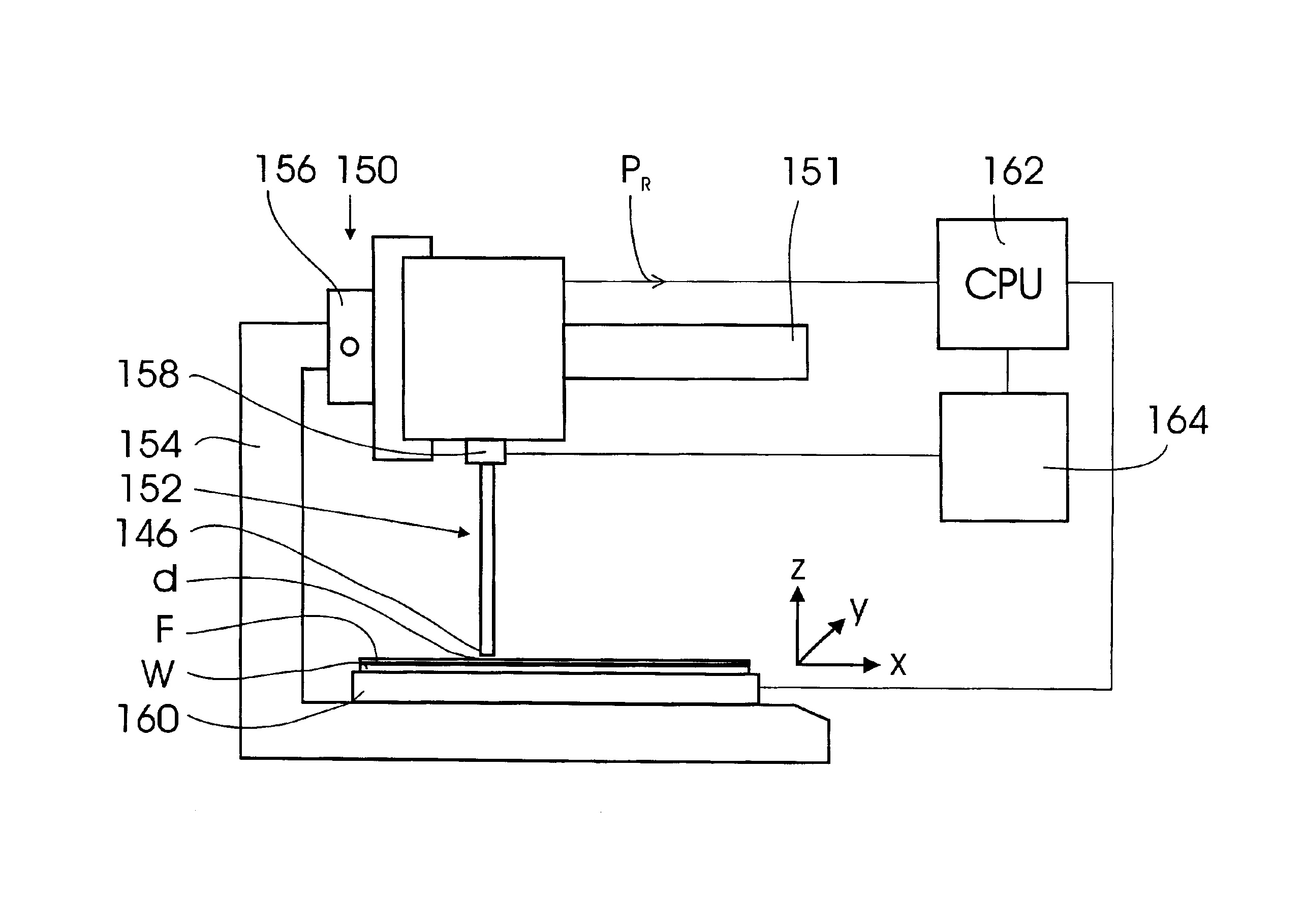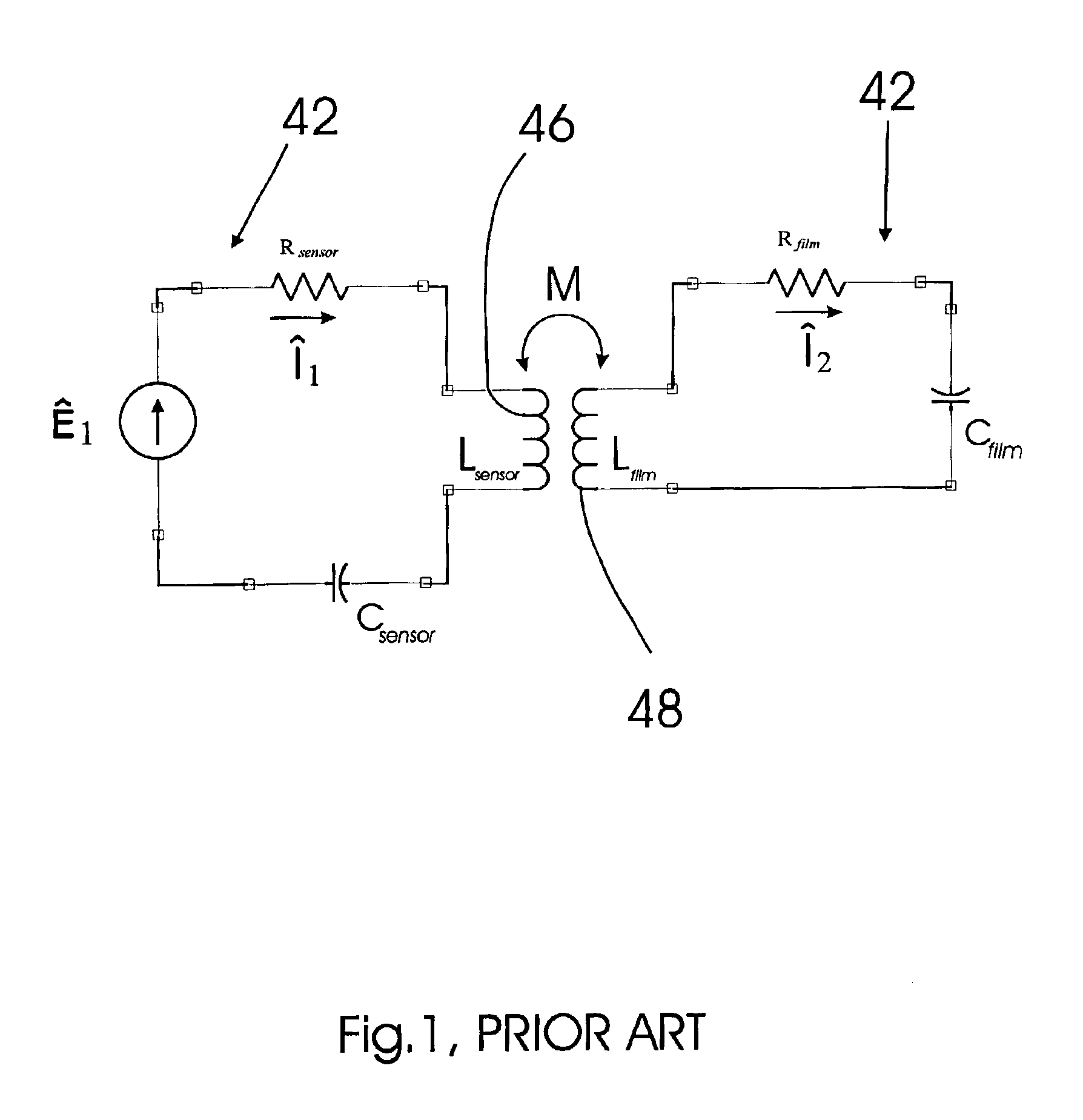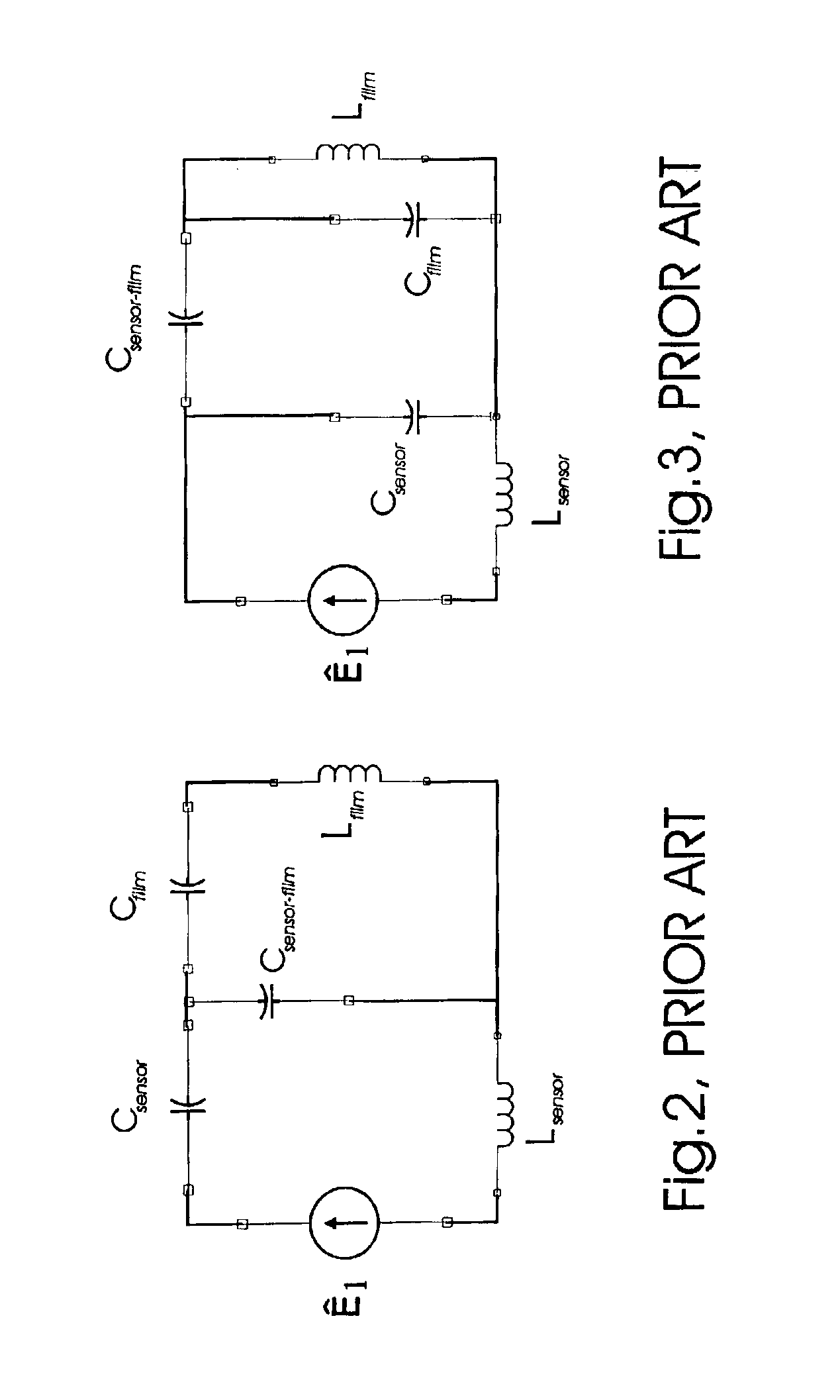System and method for measuring characteristics of materials with the use of a composite sensor
- Summary
- Abstract
- Description
- Claims
- Application Information
AI Technical Summary
Benefits of technology
Problems solved by technology
Method used
Image
Examples
Embodiment Construction
[0040]For better understanding of the inductive, capacitive, or inductive-capacitive coupling that is generated between the sensor of the invention and the virtual coil generated in the bulk material or in the film to be measured, it would be advantageous to refer to the description of the aforementioned U.S. patent application Ser. No. 434,625 filed by the same application in May 12, 2003. In that application, the equivalent “sensor-film” system was considered as a pair of two oscillation circuits having inductive-capacitive coupling. The first oscillating circuit comprised a closed-loop circuit that contained an inductance coil of the sensor per se, while the second oscillating circuit (i.e., the virtual oscillating circuit) was formed in the measured film and the aforementioned coupling comprised an inductive-capacitive interaction between the sensor and the film.
[0041]It is obvious that the sensor coil of the aforementioned coupled electric circuit generates an electromagnetic f...
PUM
 Login to View More
Login to View More Abstract
Description
Claims
Application Information
 Login to View More
Login to View More - R&D
- Intellectual Property
- Life Sciences
- Materials
- Tech Scout
- Unparalleled Data Quality
- Higher Quality Content
- 60% Fewer Hallucinations
Browse by: Latest US Patents, China's latest patents, Technical Efficacy Thesaurus, Application Domain, Technology Topic, Popular Technical Reports.
© 2025 PatSnap. All rights reserved.Legal|Privacy policy|Modern Slavery Act Transparency Statement|Sitemap|About US| Contact US: help@patsnap.com



